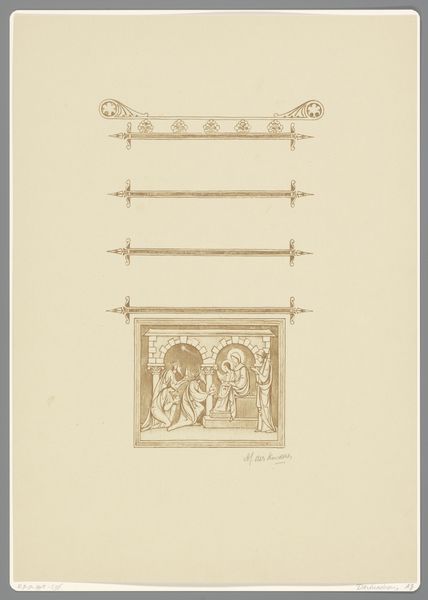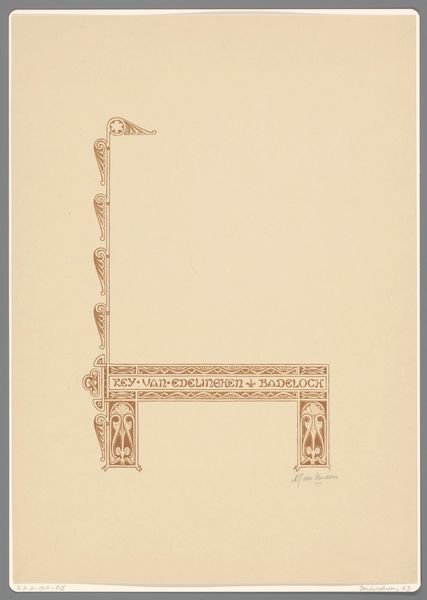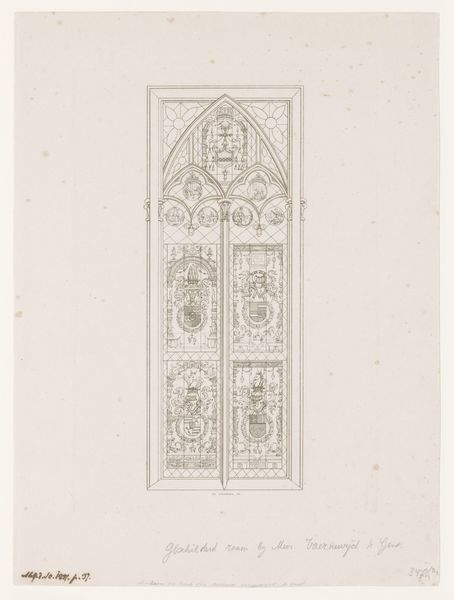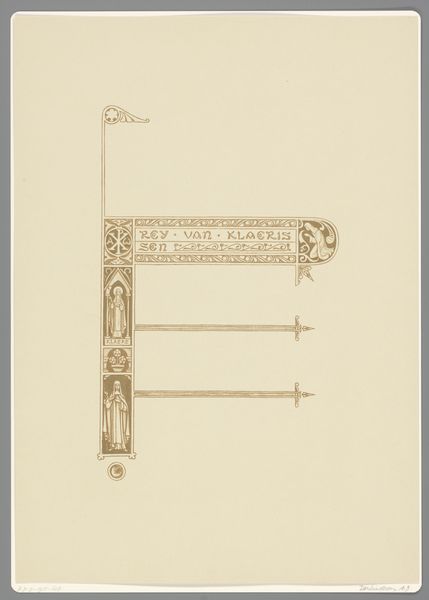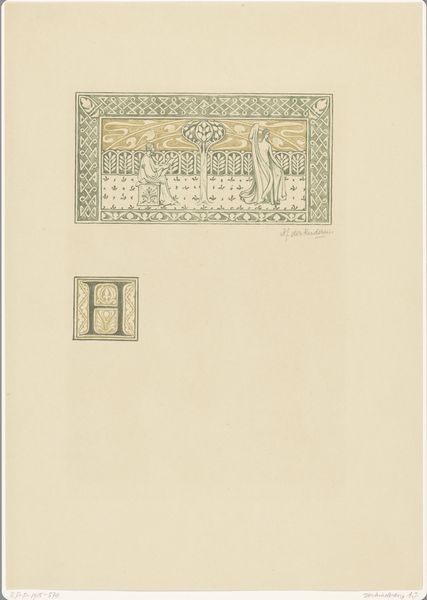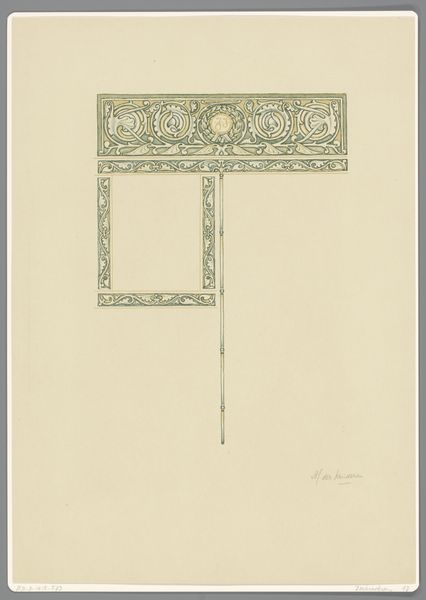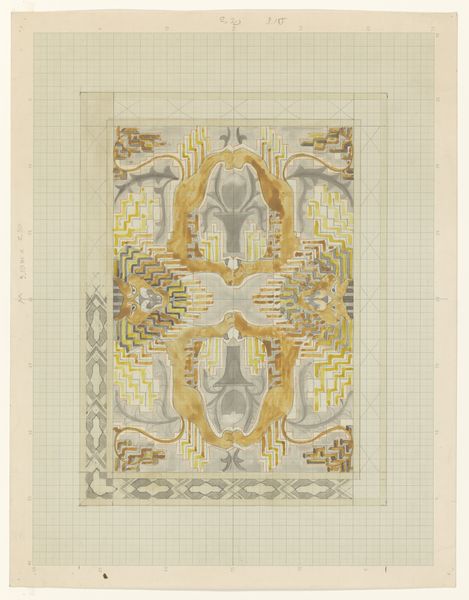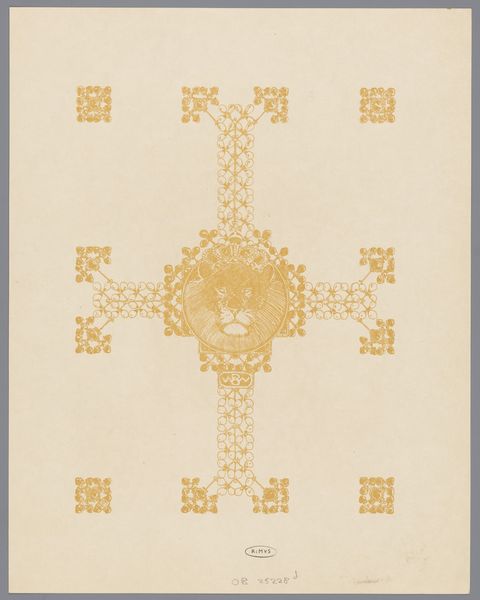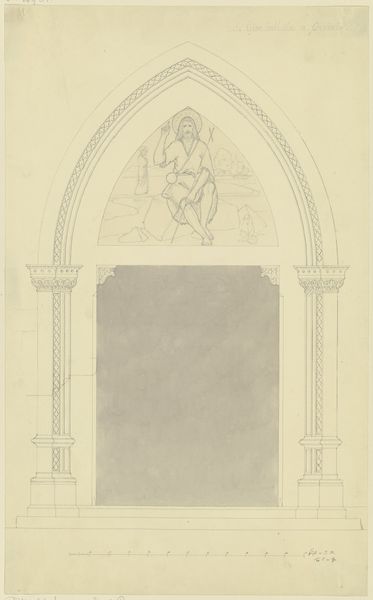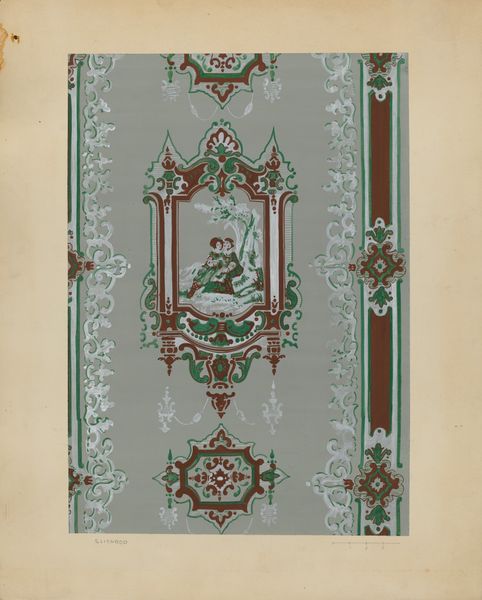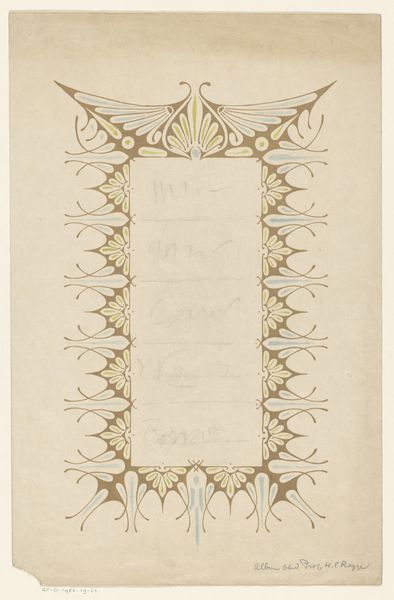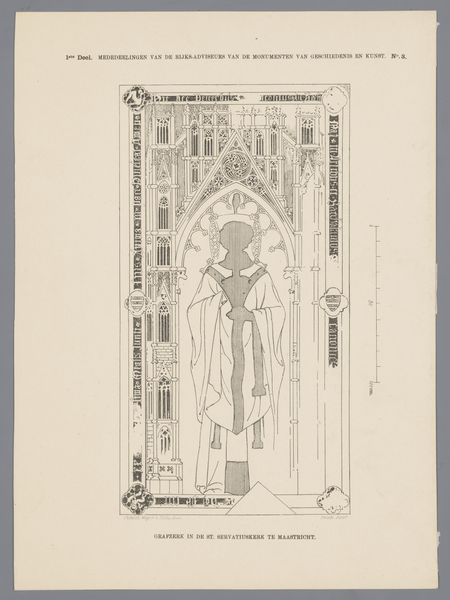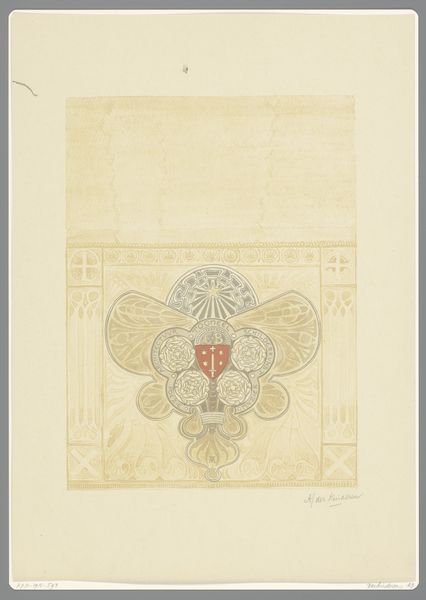
drawing, print
#
drawing
#
historical design
#
art-nouveau
#
allegory
# print
#
geometric
#
symbolism
#
history-painting
Dimensions: height 414 mm, width 295 mm
Copyright: Rijks Museum: Open Domain
Antoon Derkinderen created this artwork, Gijsbrecht, Badeloch en kind, using crayon and pencil. Look closely at the symbolic weight of the imagery here. We see Gijsbrecht and Badeloch standing with their child in the central panel, a family portrait framed by potent symbols of mortality. On either side, a skull peers out from beneath a classical pillar. These skulls, memento mori, remind us of the ephemeral nature of life, a stark contrast to the familial love depicted. This juxtaposition isn't new. Consider the vanitas paintings of the Dutch Golden Age, where skulls, decaying fruit, and extinguished candles remind viewers of their mortality amidst life's fleeting pleasures. The skull evolves from a simple symbol of death to a complex meditation on life, memory, and legacy. It speaks to our collective subconscious, reminding us of the inevitable cycle of life and death. It’s a powerful force engaging viewers on a deep, subconscious level. This symbol and its ability to evolve and resurface across history, taking on new meanings, continues to engage and challenge us.
Comments
No comments
Be the first to comment and join the conversation on the ultimate creative platform.
